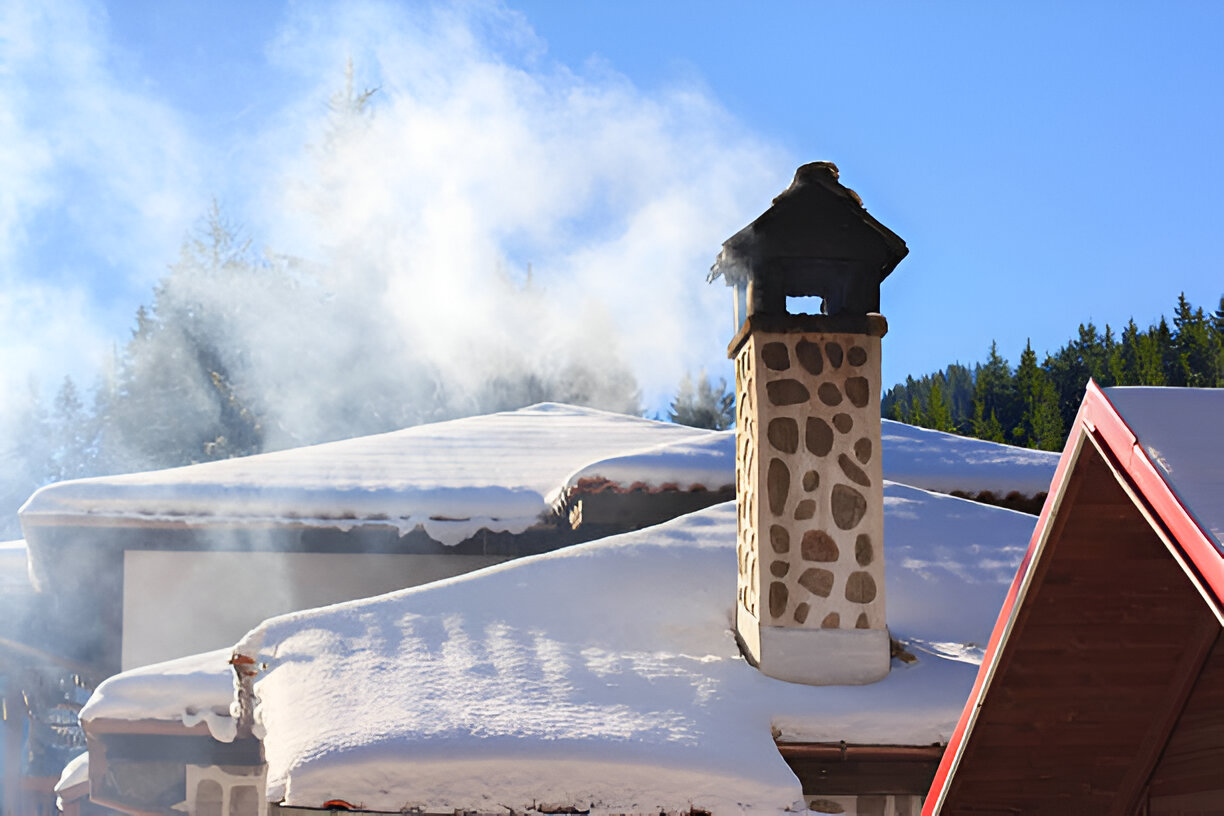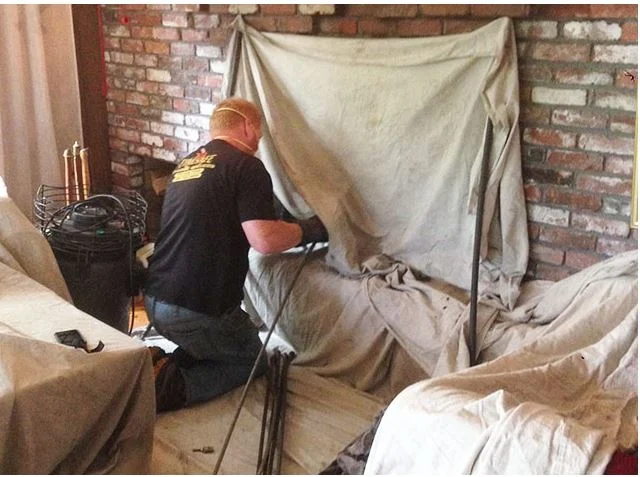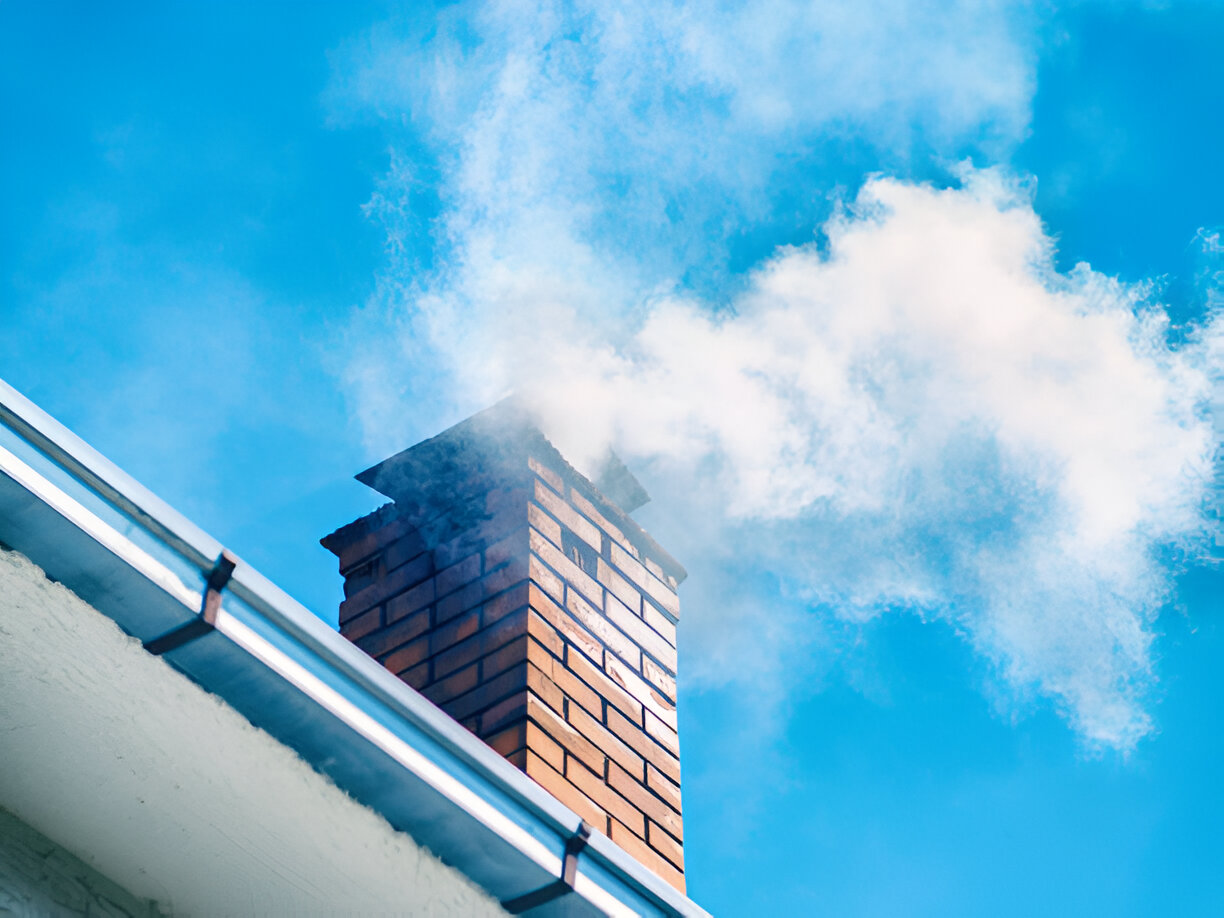Your home should be a place of safety and comfort, but poor indoor air quality can quietly undermine that peace. Dust, smoke, soot, creosote, or blockages in a chimney can circulate harmful particles through your living space, affecting your family’s breathing and overall well-being. With the right maintenance and attention, a clean, properly functioning chimney can make a significant difference in keeping the air you breathe fresh and healthy.
Key Takeaways
- A dirty or blocked chimney can send smoke, soot, and creosote residue back into your home, triggering allergies and respiratory issues.
- Regular chimney sweeping and inspection reduce indoor air pollutants, keeping your living space safer.
- Common problems like bird-nest blockages, cracked crowns, or damaged flues often lead to poor ventilation and increased indoor contamination.
- Seasonal chimney inspections detect local winter freeze damage and spring blockages, protecting your home year-round.
Chimneys and Your Indoor Air: What’s at Stake

Creosote
Creosote is a dark, tar-like residue that forms inside chimney flues when wood doesn’t burn completely. It clings to the chimney walls and hardens over time. This creosote buildup is more than just a fire hazard, it can release fine particles into the air, which may irritate the lungs and worsen respiratory conditions like asthma or bronchitis. Even in small amounts, creosote contributes to poor indoor air quality.
Blog related: Do Chimney Cleaning Logs Work?
Soot
Soot is a fine black powder made of carbon particles produced by burning wood or other fuels. It’s light enough to travel through the air and settle on furniture, walls, and floors. Inhaled soot can aggravate allergies, cause coughing, and trigger breathing problems. It can also make your home smell smoky long after the fire is out.
Blockages
Blockages happen when something physically obstructs the chimney flue, often bird nests, leaves, or other debris. These blockages prevent smoke and gases from escaping properly, causing them to flow back into the home. They can also trap moisture, leading to mold growth inside the chimney. Seasonal checks are essential because blockages can appear quickly, especially in the spring and summer.
Blog related: Flue Dampers Chimney Types
Smoke
When a chimney is damaged, blocked, or poorly maintained, smoke can drift back into the home instead of venting outside. This not only leaves a lingering odor but also exposes your household to harmful substances like carbon monoxide and tiny particulate matter. Repeated exposure to smoke indoors can lead to headaches, watery eyes, or more serious respiratory issues.
Blog related: Common Chimney Draft Problems
Respiratory and Allergy Impacts
When fine particles like soot enter the home, they can aggravate conditions like bronchitis and allergic rhinitis. In children and older adults among our very real customers this leads to more frequent coughing or nighttime wheezing.
By contrast, homes with well-maintained chimneys often report noticeably cleaner air and fewer allergy flare-ups.
Local example: One family in Gilbertville told us their winter nights were noticeably better once the chimney was swept and a new cap installed.
How Regular Chimney Maintenance Helps
- Sweeping removes soot and creosote, cutting down the volume of airborne irritants.
- Inspections catch hidden damage—cracked flue tiles or a deteriorated crown—before they worsen.
- Cleaning/blockage removal ensures proper ventilation, so smoke exits outdoors, not into your living room.
- Waterproofing & crown repair prevents moisture that could foster mold in the chimney system—another air-quality risk.
Get Expert Help for a Cleaner, Safer Chimney

Hiring chimney professionals ensures hidden problems are identified, remove dangerous creosote buildup, clear blockages, and make repairs that prevent smoke,soot, and moisture from affecting your home’s air. They use the right tools, follow safety standards, and understand how to keep your fireplace running efficiently while protecting your family’s health. For trusted, experienced service you can rely on year-round, Firesafe Chimney Services is here to help.
Tips to Boost Indoor Air Quality Between Visits
1. Burn only seasoned hardwood
Wood that has been properly dried for at least 6–12 months burns hotter and cleaner, producing less smoke and residue. This helps keep creosote buildup in your chimney to a minimum, reducing both fire risk and airborne pollutants.
2. Run a trusted HEPA filter in your home
High-Efficiency Particulate Air (HEPA) filters can capture fine particles like soot, dust, and allergens. Running one while you’re using your fireplace can significantly improve the quality of the air you and your family breathe.
3. Keep fireplace doors closed when not using the fire
Closing fireplace doors helps prevent leftover smoke, ash, and dust from drifting into your living space. It also keeps drafts from pulling particles into the room during windy weather.
4. Install or test carbon monoxide detectors
Carbon monoxide is odorless and invisible but potentially deadly. Detectors provide an early warning if dangerous levels build up in your home due to poor ventilation or chimney blockages.
5. Ask a certified chimney expert
Professionals can spot hidden hazards, recommend the safest fuel choices, and suggest improvements like chimney caps or dampers to keep pollutants outside and fresh air flowing in.
Contact Firesafe Chimney Services
Your home should be a safe, healthy place for your family, not a source of hidden pollutants. Seasonal weather changes, heavy fireplace use, and common chimney issues like creosote buildup or blockages can all lower your indoor air quality and impact your health.
Firesafe Chimney Services has helped hundreds of local homeowners keep their fireplaces safe and their air clean through professional inspections, sweeping, and repairs. With over two decades of experience and certified technicians, we know how to address the unique challenges of Central Massachusetts homes.
Contact us to schedule your chimney inspection or cleaning now and breathe easier knowing your home’s air is clean, safe, and healthy.
Frequently Asked Questions (FAQs)
How often should I schedule chimney sweeping in Massachusetts to maintain indoor air quality?
For most homes in MA, chimney sweeping is recommended at least once a year before the heating season. If you burn wood frequently during the winter, consider an additional mid-season cleaning to prevent creosote buildup and keep indoor air clean.
Can creosote buildup in my chimney really affect my family's health?
Yes. Creosote releases fine particles and chemicals that can aggravate asthma, allergies, and other respiratory conditions. Regular chimney cleaning by a certified professional removes this buildup and improves indoor air quality.
What local factors in Massachusetts impact indoor air quality from fireplaces?
Cold Massachusetts winters lead to tightly sealed homes, which can trap pollutants inside. Heavy seasonal fireplace use also increases soot and creosote buildup, making regular chimney maintenance essential for clean indoor air.
Are chimney blockages common in Central Massachusetts homes?
Yes. We frequently find bird nests, leaves, and debris in chimneys, especially in spring. These blockages restrict airflow, cause smoke backflow, and reduce indoor air quality.












